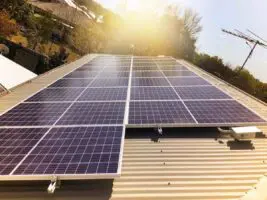Hybrid vehicles may have had pole position so far in the race to a sustainable transportation future, but electric-only vehicles are about to pull even – and they’re both becoming a significant part of global vehicle sales.
Combined worldwide sales of hybrid and plug-in electric vehicles will reach 6.6 million annual units by 2020 and become almost 7% of the total light-duty vehicle market, according to Navigant Research’s 2013-2020 Electric Vehicle Market Forecast.
Several factors are fueling this growth, including consumer demand for less-expensive operational costs compared to gasoline-powered vehicles, consistent government policy, multiple new models from major automakers, and lower battery prices.
Different Electric Vehicles, Similar Economic Outlooks
Three different types of electric vehicles (EVs) fall under Navigant’s forecast: hybrid electric vehicles (HEVs), those that generate all their own electric energy; plug-in electric vehicles (PHEVs), those that use electricity from the grid and gasoline; and battery-electric vehicles (BEVs), those that only use electricity from the grid.
While the three types of vehicles may have major differences in how they’re powered, a unique combination of factors means they all have one thing in common – they’re about to see a global sales boom.
Under Navigant’s outlook, HEVs will grow at a compound annual growth rate (CAGR) of 11.5%, while PHEVs will sell at a 31.9% CAGR, and BEVs increase at a 31.5% CAGR over the next seven years.
Better Prices And Government Policy Drive Consumer Demand
So what’s powering this surge? “Electric vehicles, including plug-in models, are becoming an increasingly important part of the global automotive market,” said Navigant’s Dave Hurst. “Growth is being driven not only by the inherent appeal of the vehicles, but also by consumer demand.”
As always, favorable economics are the prime ingredient for market expansion. Gasoline prices are projected to increase at a 7.2% CAGR between 2013 and 2020, while HEV and PHEV battery pack prices are expected to decrease 10% and 26% respectively by 2020 as advanced research unlocks battery innovations.
Considering battery packs can represent up to half of EV prices, while the cost to recharge a car with electricity is a fraction of the cost compared to refueling with gasoline, it’s clear why Navigant sees lower EV operational costs as such a major market driver.
But beyond better economics, electric-powered vehicles are becoming much more mainstream with more options available to consumers. From established models like the Chevy Volt, Nissan Leaf, and Tesla Model S to new options like the Chevy Spark EV and hybrids from most major automakers, EVs are available in almost every price and performance range.
Navigant also credits steady government policy support for the rise in EV fortunes, expecting currently available tax incentives worldwide to remain steady and provide financial support for consumers, while stricter fuel economy and emissions regulations encourage automakers to continue expanding low-carbon options.
Cleaner Cars = Green Growth Across America
Perhaps most promising, this pending EV boom could also boost the economic outlook for several states across the US. North America is expected to be the largest PHEV market in the world and the only market anticipated to have significantly higher PHEV sales compared to BEV sales, with a 1.5:1 sales ratio.
These projections mean we’re about to see many more clean cars on US roads. Navigant forecasts over a million PHEVs will be sold in California, New York, Washington, and Florida alone between 2013 and 2022. California is expected to dominate overall sales, with more than 815,000 units, while Hawaii will see the highest concentration with more than 10% of total vehicle sales being PHEVs.
While President Obama’s expectation of one million EVs on the road by 2015 might have been a little bit ahead of its time, the underlying trends hold true. Navigant’s forecasts are just the latest confirmation that low-carbon transportation is accelerating – bringing with it cleaner air, less dependence on fossil fuels, and a greener economy.
This article was originally published on CleanTechnica. Reproduced with permission












